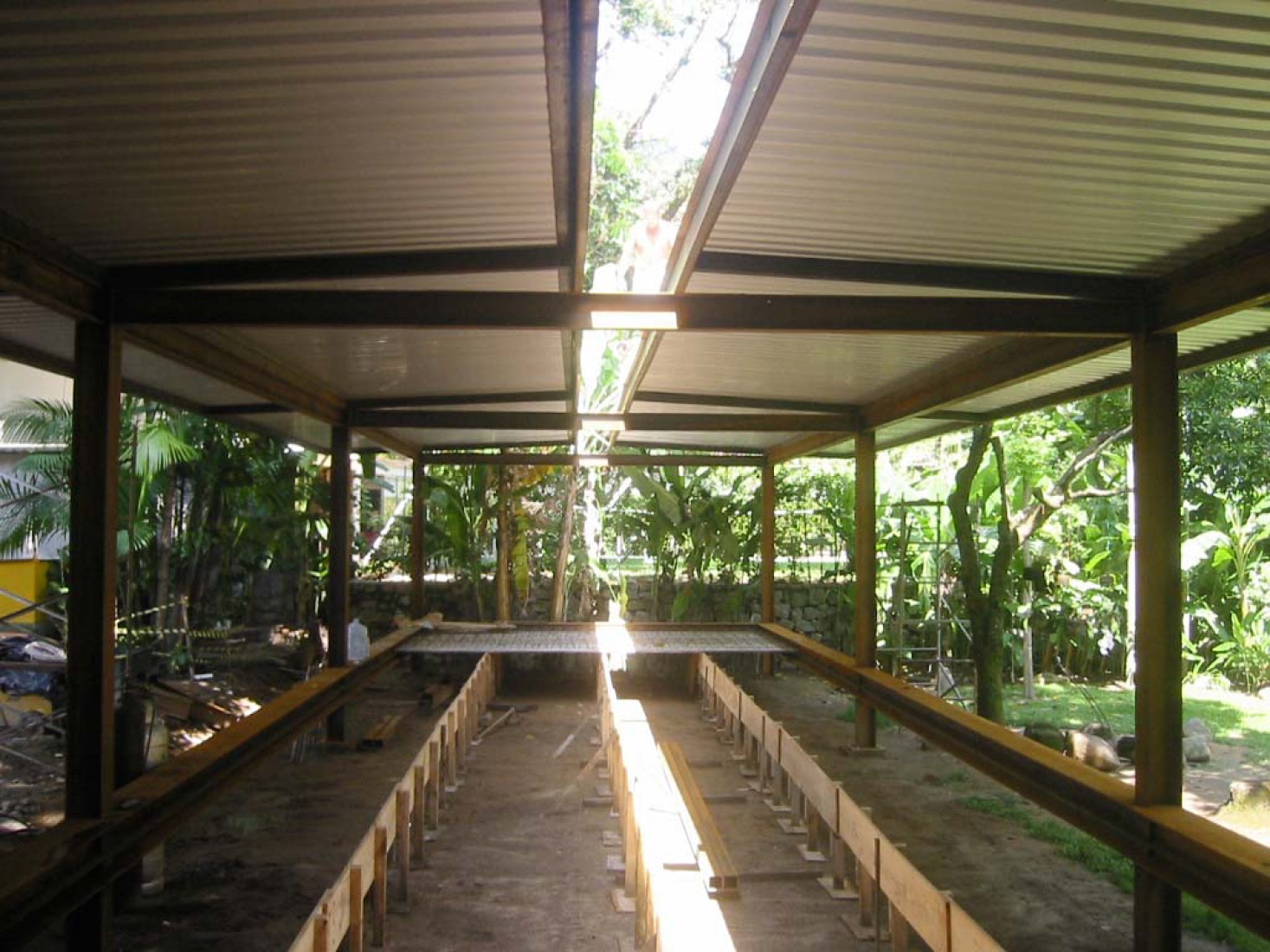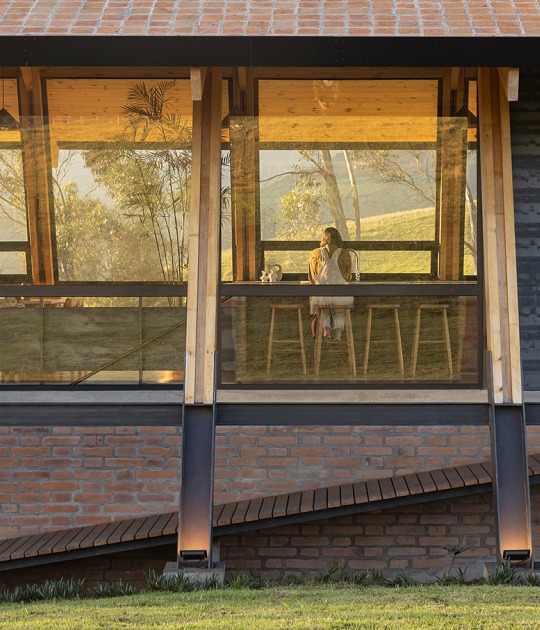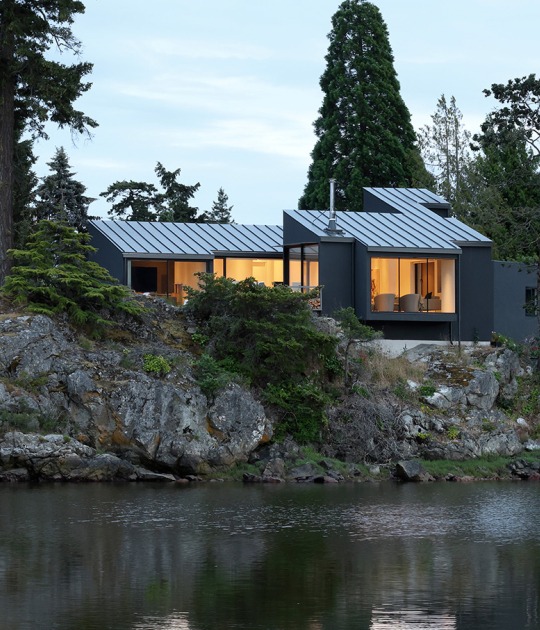Memory of project
A house made for the granddaughter of great architect Sergio Bernardes and a Colombian artist was a challenge. At first they wanted the house to have the characteristics of Lota House made by her grandfather in 1950, from which we kept some materials such as the ceiling. The development of the project was very interactive.
The house divides the field into two, the skylight (24m x 0.60 m) is a feature that accentuates that division. This implementation was the beginning of the project. The main goal was to preserve the centenary trees.
The vision goes beyond the house, the walls are made of glass. The parallel solid walls don't interrupt the vision. The living room is in the center, the rooms at the ends. The center of the house is a terrace when open. Brazilian homes all have a terrace as the most important place for socializing, in this case it is already one. The roof, designed 1.5 m beyond the glass walls protects the main facades. What brings intimacy to that glass house is the immersion in nature. The light ray imprints on the parallel walls as the day goes on.
The steel structure was built in 15 days. The cover is made of sandwich zinc-aluminum tiles and was placed in one day.
The topography of the region, below the mountain and subject to flooding, was the reason for the suspension of the floor at 80cm.
The project is a clear reference to Farnsworth House by Mies van der Rohe with its calm presence in a site that should have remained untouched.
Text.- Carla Juaçaba
CREDITS.-
Architect.- Carla Juaçaba.
Trainees.- Joana Ramalhete, Nina Lucena.
Collaborators.- Pirajá dos Anjós (Engineer), D´angeli serviços de engenharia (Structures), Simon Merheb (Systems), Joana Marcier (Lighting).
Lot area.- 1.153 m².
Built area.- 140 m².
Construction period.- 2005–2007.
Location.- Itanhangá, Rio de Janeiro, Brazil.



































![10 Architecture Studios Led by Women [II] 10 Architecture Studios Led by Women [II]](/sites/default/files/styles/mopis_home_news_category_slider_desktop/public/metalocus_women-arch-2016_eng-8_0.png?h=5c593260&itok=Wb9aNuM7)





